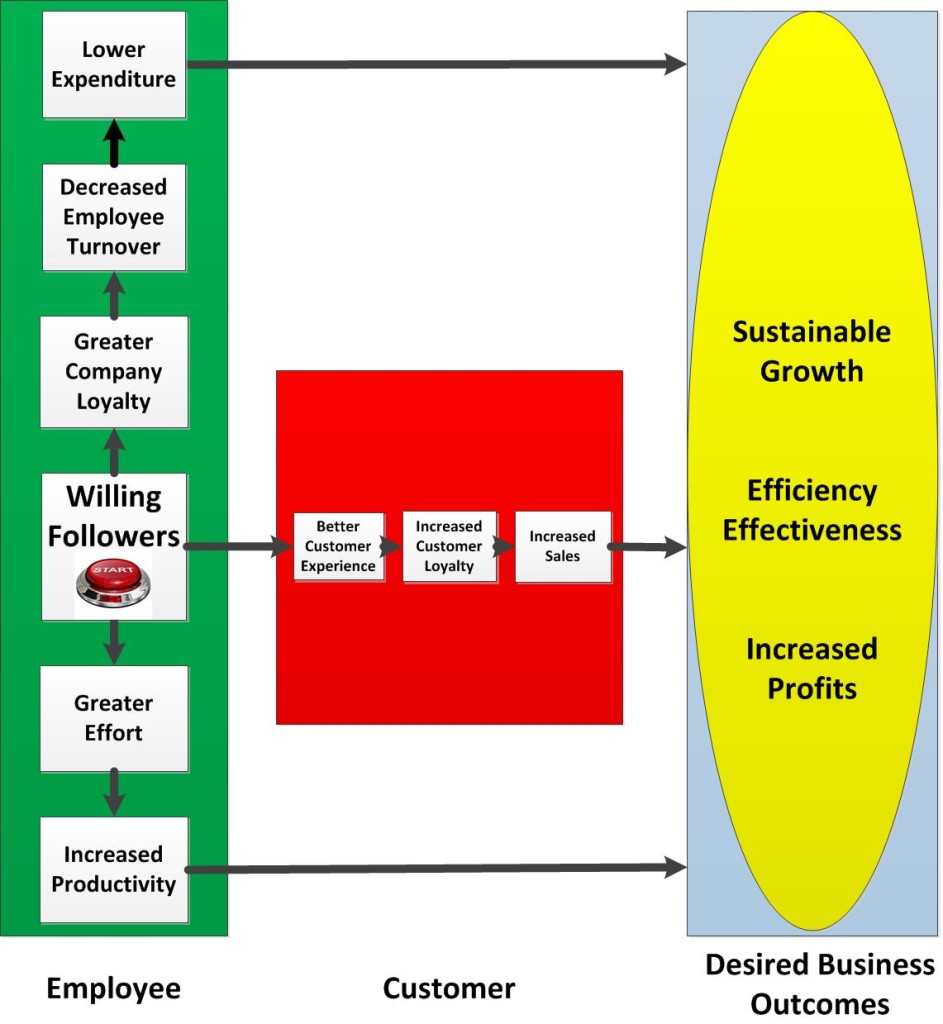 I know I should change my behaviour but …
I know I should change my behaviour but …
Improving your technical competencies usually involves some sort of skills training. Whereas becoming a better leader often means changing your behaviour. And of course, you know how difficult the latter is to achieve. However there is good news. There are techniques such as affirmation and visualisation which can help you this. But the bad news is that many people can’t find any logical reason for why they should even change in the first place. There are basically three reasons for this.
- The first one being something known as the “Better than Average Effect”; excellent examples of which appear in a study of “Helping successful people get even better” by Marshall Goldsmith (Business Strategy Review – London Business School, spring 2003). In it, he talks about “as we become more successful, it seems harder to change” i.e. “when things are going well we often feel no reason to change”. Goldsmith then goes onto say that “one of the greatest mistakes of successful people is the assumption, “I am successful. I behave this way. Therefore, I must be successful because I behave this way!”
- The second reason relates to a concept known as “Confirmation Bias”. This is the tendency for people to favour information which confirms their beliefs and to ignore information which challenges those beliefs. Often this bias relates to emotionally charged issues especially those relating to politics and how people behave. Bottom line? Most people tend to see the world through a selective filter; only letting in information which confirms what they already believe and disregarding opinions which go against those beliefs. Which means that the truth doesn’t always enter into the equation. Instead it’s simply a case of people only accepting evidence which is consistent with their own point of view and ignoring the rest. Benjamin Franklin said it best.
“A man convinced against his will is of the same opinion still”
- The third and final reason is that people are simply “creatures of habit”. This means that they prefer for things to remain the same and therefore tend to stick with the way they currently behave. It makes sense from an evolutionary point of view because it saves time and mental energy. And it’s for this reason that people’s brains are hard-wired in such a way. However due to the brain’s plasticity, you can re-wire it. And by doing so, you can take on new behaviours; thus breaking away from your old ones. It’s not difficult to do but it does require repeating a new behaviour over and over again until it becomes permanently wired into your brain.
Changing your behaviour requires a change in mindset
So it is possible to change your behaviour but you must first make a commitment to it happening and then follow it up with the necessary actions. Yet if 1) you can’t get past your confirmation biases; 2) you continue to believe that you are already good at what you do i.e. you regard yourself as definitely being “better than average”, and 3) you can’t break away from your deeply ingrained habits, you’ll end up doing what Albert Einstein once said about ‘insanity’.
“Doing the same thing over and over again and expecting different results”
So you need to distinguish between what is real and what is imagined and then take the appropriate actions to rectify it.
Here are two quotes which clearly demonstrate this point.
- “All wise thinkers have said for ages that the greatest limitations are those man imposes on himself, and thus the greatest obstacles to success is a mental obstacle.” – Mark Fisher from his book “The instant millionaire: a tale of wisdom and wealth”.
- One of the scenes from the 1980 film, “Star Wars Episode V” shows Yoda effortlessly freeing an X-Wing fighter from the bog by using “The Force”. Luke Skywalker amazed at what he had just witnessed says, “I don’t believe it”. Yoda immediately responds with, “that is why you fail”.
WHAT’S NEXT
- Check out my blogs | http://www.leadingbyinfluence.com.au/articles/
- Check out my YouTube Channel | https://www.youtube.com/channel/UCg9HLPboV-lI6GRpA8m61vg
- To check me out, visit my Linked profile | http://www.linkedin.com/in/timwilkeleadershipauthor/
- Download (while it’s still free) my upcoming book in the series “100 Tips to be a Great Leader” | http://eepurl.com/bE_n7D
- Purchase my book “Look Inside: Discovering the secret to leadership success” | https://www.amazon.com/dp/B017S6BGFG
- Purchase my book “100 Tips to be a Great Leader: Volume I” | https://www.amazon.com.au/dp/B074FX3FGT
- To find out about my online leadership-development mentoring program, contact me by clicking this link | http://www.leadingbyinfluence.com.au/contact. Your first instalment is free and without obligation.
- To find out about my in-house leadership development workshop, contact me by clicking this link | http://www.leadingbyinfluence.com.au/contact.
FOLLOW me on
- LinkedIn | http://www.linkedin.com/in/timwilkeleadershipauthor/
- Twitter | http://www.twitter.com/timwilke1
- Pinterest | https://www.pinterest.com.au/tim510514/
- Facebook | https://www.facebook.com/TimWilkeLeadingbyInfluence/
SHARE my posts / videos on
- Twitter, Pinterest, Facebook, LinkedIn











 Employee satisfaction and employee engagement are not the same thing.
Employee satisfaction and employee engagement are not the same thing.